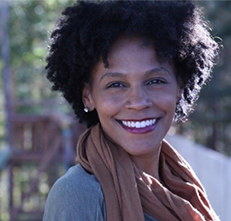Despite advances in medical research and care, there are significant disparities in maternal health and infant birth and health outcomes.1Access to prenatal care and education can dramatically improve birth and health outcomes for moms and their babies,2 but women who are uninsured (or underinsured) often miss out on these critical services.
The nonprofit organization Healthy Mothers, Healthy Babies Coalition of Georgia (HMHB) has been working since the 1970s to ensure that families across the state have access to preventive and prenatal health care. One of their programs offers prenatal education for expectant families with the goal of reducing disparities and improving outcomes for moms and babies.
Ensuring Access for All
Since 1994, almost 40 hospitals’ labor and delivery departments have closed across the state. These closures raised concerns about access to perinatal health care, especially for uninsured and underinsured women. Georgia has 6 Perinatal Regions. Research conducted in the Augusta region, where there have been several closures, showed that only 10% of women there were getting prenatal education.3
To address these concerns, HMHB launched their Prenatal Education Program. This program aims to increase access to high-quality prenatal education and resources for all of Georgia’s expecting moms—regardless of insurance status. Mica Whitfield, who directs the program, says the overarching goal is to reduce premature birth, low birth weight, and infant and maternal mortality in the state.
Meeting Moms Where They Are
HMHB is committed to providing critical information for moms in a format that’s relevant, accessible, and effective. To accomplish this, the Prenatal Education Program collaborates with local organizations to deliver an evidence-informed curriculum that’s tailored to expecting moms who are at high risk for poor birth or postpartum health outcomes. “What works in one place may not work in another,” says Whitfield. “We need to be flexible so we can reach moms where they are.”
One way they do this is by adjusting the timing of classes. Most childbirth education programs last several weeks, but many women in their target population don’t have the luxury of that much free time. So, HMHB designed a class that’s just 2 hours long—and free to participants. The class covers a comprehensive range of topics including conception, birth, breastfeeding, maternal mental health, safe sleep for babies, and HIV prevention.
Using Data to Provide and Improve Services
Whitfield shares that the program uses a rigorous data collection process to inform class content and provide a touchpoint for linking moms with the services they need.
Before and after the class, HMHB measures participant knowledge of the topics covered. They also ask about participants’ experience and satisfaction. And they follow up with participants after the class to gather data on birth outcomes—once at 3 months and again at 6 months. Finally, HMHB tracks whether or not moms use the information they learned in the class. This also provides an opportunity to see if the moms need any additional support, services, or referrals.
Success by the numbers
The Prenatal Education Program sees consistent knowledge gains for the topics covered in the classes—from safe sleep to HIV prevention. But the participants aren’t just learning new information, they’re putting it into practice. According to a recent report,4 out of all expecting mothers who participated in the class:
- 84% asked their providers about birth control
- 82% had a vaginal delivery
- 68% initiated breastfeeding after birth
In addition, 93% of participants report that they enjoyed the program and would recommend it to someone else.
Strong Partnerships Make an Impact
Whitfield explains that to establish and maintain the program, they need to build strong relationships with community partners. “Most of the work we do is built on partnership,” she says. Local organizations—including health departments, hospitals, and community-based organizations—identify and recruit participants. They sometimes even provide transportation to the class.
Partners say they like that the HMHB class reinforces information that’s included in other health education programs, but in a way that brings all the critical pieces together. Additionally, funders are consistently impressed with the program’s outcomes.
Looking Ahead
Moving forward, Whitfield says they want to continue using participant feedback to improve their educational offerings. They heard from focus group participants that moms want information about fitness, so they’d like to pilot a program that combines fitness education with perinatal education.
In June 2019, HMHB will launch a microsite called “Pickles and Ice Cream Georgia.” The site will offer online resources for moms, prenatal educators, and health care providers, and will include resources like toolkits for postpartum care and a list of local prenatal education classes.
In the fall, they plan to open satellite offices in 3 rural regions where resources for pregnant women are currently limited. The plan is to use perinatal community health workers to reach moms in these areas, and Whitfield is excited to see the impact they’ll have over a longer period of time.
For Whitfield, the most rewarding part of her job is hearing the positive feedback from the women themselves, who have said things like: “[The class] opened my eyes to breastfeeding” and “I shared information with [other family members], especially about Medicaid.” Comments like these show that the class has a strong impact on participants, but also reaches a wider audience through them. “When I get an opportunity to hear stories and know that we're making an impact,” Whitfield says, “that really fuels me.”
1 https://www.healthypeople.gov/2020/topics-objectives/topic/maternal-infant-and-child-health
2 https://www.healthypeople.gov/2020/tools-resources/evidence-based-resource/recommendations-to-improve-preconception-health-and-health-care-united-states-a-report-of-the
3 Data provided by Healthy Mothers, Healthy Babies Coalition of Georgia.
Related Healthy People 2030 topics:
Related Healthy People 2030 objectives:






